Allegheny Monkeyflower
- September 25, 2023
- 0 comment
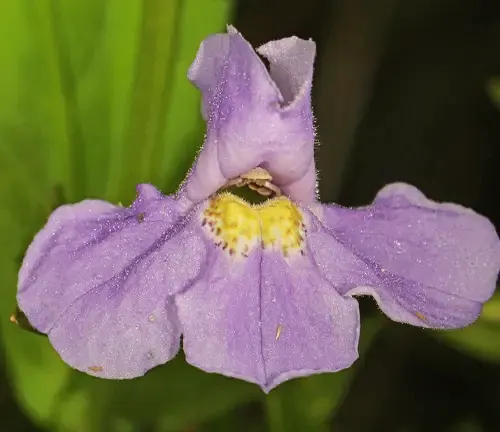
The Allegheny Monkeyflower, scientifically known as Mimulus ringens, is a captivating and ecologically significant perennial wildflower native to the eastern United States. This plant, which belongs to the genus Mimulus, is celebrated for its distinctive violet-blue blossoms, each bearing two prominent white patches on its lower lip. These striking tubular flowers, measuring between 1 to 2 inches in length, are clustered along the plant’s elegant stems, creating a visually enchanting display.
One of the key hallmarks of the Allegheny Monkeyflower is its adaptability to diverse environmental conditions. It thrives in wetland habitats, such as marshes, riverbanks, and pond margins, where its roots can partially submerge in water. However, it can also flourish in both full sun and partial shade, making it a versatile choice for gardeners and conservationists alike.
Beyond its aesthetic allure, the Allegheny Monkeyflower plays a pivotal role in the ecological tapestry of wetland ecosystems. Its uniquely shaped blooms have evolved to attract specific pollinators, primarily long-tongued bees and hummingbirds, through their vibrant coloration and nectar-rich rewards. By facilitating pollination, this wildflower contributes to the reproduction of numerous other wetland plant species, thus enhancing biodiversity.
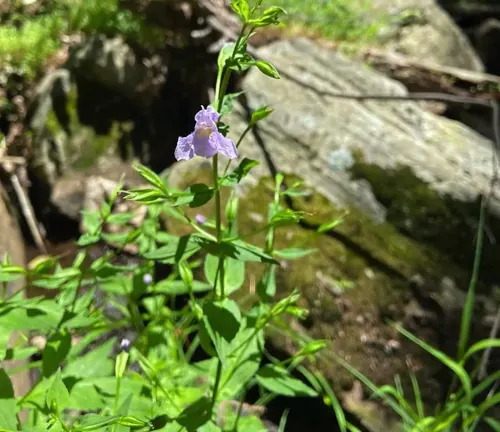
| Characteristics | Description |
| Scientific Name | Mimulus ringens |
| Family | Phrymaceae |
| Plant Type | Perennial Wildflower |
| Native Range | Eastern United States |
| Blossom Color | Violet-blue with white patches on the lower lip |
| Blossom Shape | Tubular |
| Blossom Size | Approximately 1 to 2 inches |
| Habitat | Wetlands, Marshes, Riverbanks, Pond Margins |
| Sunlight Requirements | Full Sun to Partial Shade |
| Pollinators | Long-Tongued Bees, Hummingbirds |
| Ecological Role | Pollinator Attraction, Soil Stabilization, Water Quality Improvement |
| Conservation Status | Vulnerable due to Habitat Loss and Climate Change |
| Conservation Efforts | Habitat Restoration, Public Awareness, Cultivation in Gardens |
| Leaves | Opposite, lance-shaped, and slightly serrated |
Getting to Know the Allegheny Monkeyflower
Nestled in the lush eastern wetlands of the United States lies the enchanting Allegheny Monkeyflower, scientifically named Mimulus ringens. This perennial wildflower has carved a special niche in the hearts of nature enthusiasts, scientists, and conservationists. As we embark on a journey to explore the world of this captivating plant, let’s unravel its unique features and unravel the secrets that make it a cherished emblem of our wetland ecosystems.
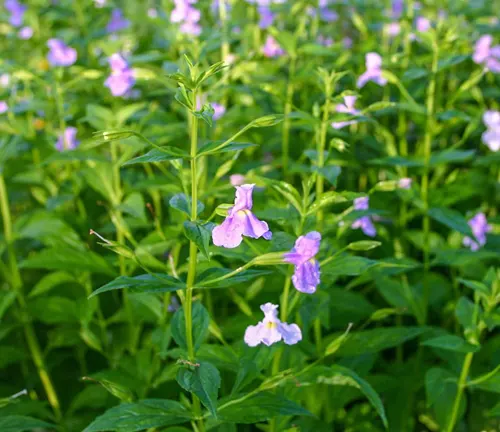
The Botanical Beauty
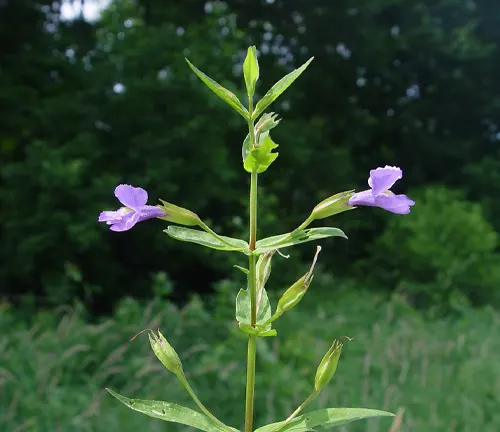
Standing proudly amid the wetland foliage, the Allegheny Monkeyflower boasts a stature of 1 to 3 feet, adorned with lance-shaped leaves arranged in pairs along its robust stems. However, its real showstopper lies in its blooms. These tubular flowers, measuring between 1 to 2 inches, exhibit a mesmerizing violet-blue hue, punctuated by two pristine white patches on the lower lip. Nature’s artistry is on full display here, an alluring design that beckons pollinators and admirers alike.
Woodland Elegance
The Allegheny Monkeyflower’s grace is not just skin deep. It plays a pivotal ecological role within its wetland habitat. The tubular shape of its blossoms has evolved to attract specific pollinators, such as long-tongued bees and hummingbirds. Their quest for nectar guides them deep into the flower, ensuring effective pollination. Beyond this, the plant’s root system is an unsung hero, stabilizing soil and preventing erosion. It also acts as a natural filter, cleansing the water by absorbing surplus nutrients. These dual functions make it a keystone species in wetland ecosystems.
Ecological Importance
The ecological importance of the Allegheny Monkeyflower extends far beyond its captivating appearance. Its blooms provide sustenance for pollinators, supporting the delicate balance of nature. Bees and hummingbirds, drawn by the vibrant colors and nectar rewards, contribute to the propagation of not only the monkeyflower but also various other wetland plant species. Moreover, its roots act as anchors, preventing soil erosion and promoting a stable environment for aquatic organisms. By absorbing excess nutrients from the water, it further aids in maintaining water quality, making it an indispensable component of wetland ecosystems.
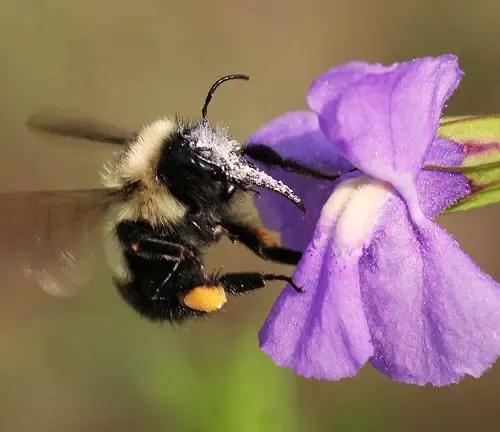
Cultivation and Conservation
The Allegheny Monkeyflower’s allure has led to its cultivation in native plant gardens, rain gardens, and botanical collections. Its adaptability to varying water levels and light conditions makes it a versatile addition to horticultural landscapes. However, this plant faces conservation challenges. Habitat loss due to urban development, agriculture, and invasive species poses a significant threat. Climate change exacerbates these issues. To safeguard this botanical gem, conservationists engage in habitat restoration, public awareness campaigns, and the cultivation of the species in controlled environments.

Benefits Beyond Beauty
This exquisite flower isn’t just about aesthetics; it offers a host of ecological services. Its role as a pollinator attractor supports biodiversity, benefiting not only the plant but also the surrounding ecosystem. In wetlands, it contributes to soil stabilization, preventing erosion, and plays a vital part in water quality improvement by absorbing excess nutrients. In urban areas, it’s a valuable addition to rain gardens, aiding in stormwater management and promoting sustainable landscaping.
Fragrance
While the Allegheny Monkeyflower’s visual appeal is undeniable, its fragrance is often a hidden gem. The subtle, sweet scent of its blossoms adds an olfactory dimension to its overall charm. Close encounters with this fragrance offer a sensory delight that enhances its already captivating presence.
Soil Stabilization
The Allegheny Monkeyflower’s contribution to soil stabilization cannot be overstated. In wetland environments prone to erosion, its extensive root system acts as a natural anchor. By firmly holding the soil in place, it prevents the loss of valuable topsoil and ensures the long-term stability of the wetland ecosystem.
Different Species
Mimulus alatus (Winged monkeyflower)
Distinguished by its winged stems and yellow or orange flowers with a spur on the back. It is found in moist meadows and woodlands.
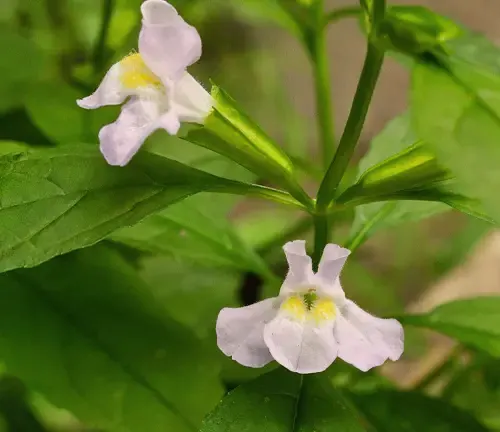
Mimulus guttatus (Yellow monkeyflower)
A small plant with yellow flowers with dark spots on the throat. It is found in moist meadows and woodlands.
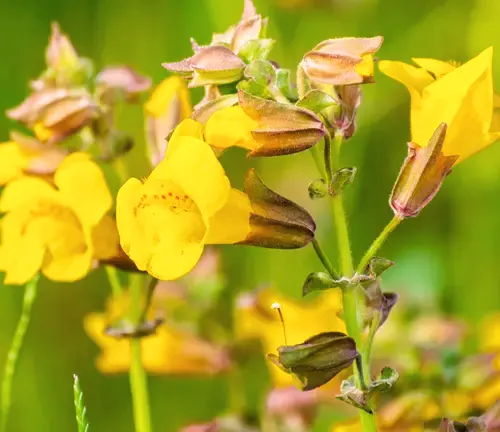
Mimulus moschatus (Musk monkeyflower): A small plant with musk-scented white or purple flowers. It is found in moist meadows and woodlands.
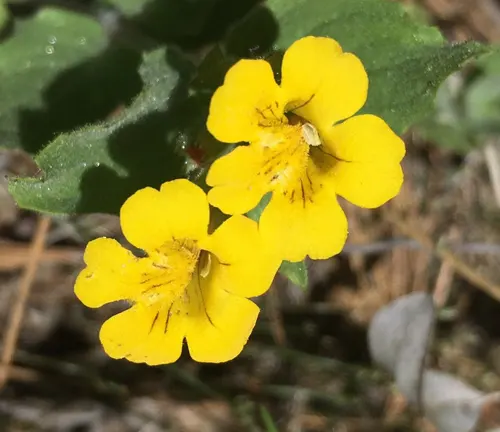
Frequently Asked Questions (FAQs)
- Is the Allegheny Monkeyflower related to actual monkeys?
Despite its name, the Allegheny Monkeyflower is not related to monkeys in any way. The name likely originated from the appearance of its tubular flowers, which some people thought resembled a monkey’s face. In reality, it’s a plant that belongs to the Mimulus genus and is entirely botanical. - Can you consume or use the Allegheny Monkeyflower for medicinal purposes?
No, the Allegheny Monkeyflower is not typically used for culinary or medicinal purposes. While some plants in the Mimulus genus have been used in traditional herbal medicine, the Allegheny Monkeyflower is not one of them. It’s primarily appreciated for its ecological significance and ornamental beauty. - Do all Allegheny Monkeyflowers have the same flower color?
While the most common color for the Allegheny Monkeyflower’s flowers is violet-blue with white patches on the lower lip, there can be some natural variation. In rare cases, you might find individuals with slightly different shades of blue or variations in the pattern of white patches, but these variations are generally minimal. - Are there any folklore or cultural stories associated with the Allegheny Monkeyflower?
The Allegheny Monkeyflower does not have prominent folklore or cultural stories associated with it. Unlike some other plants with rich histories in traditional medicine or mythology, the Allegheny Monkeyflower is primarily appreciated for its ecological role and aesthetic appeal. - Can I grow the Allegheny Monkeyflower in my garden if I don’t have a wetland area?
Yes, you can cultivate the Allegheny Monkeyflower in your garden even if you don’t have a wetland. This plant is adaptable to varying moisture levels, and it can thrive in rain gardens or areas with consistently moist soil. However, it’s essential to provide it with the appropriate conditions, including well-drained but consistently moist soil, to ensure its health and vigor in a garden setting.



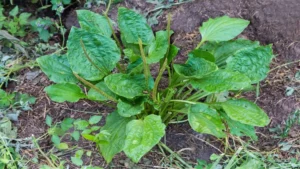
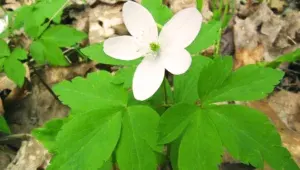




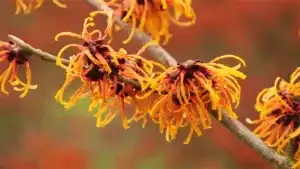

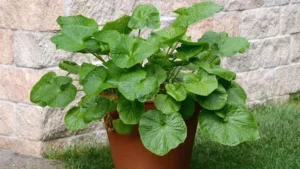


Leave your comment